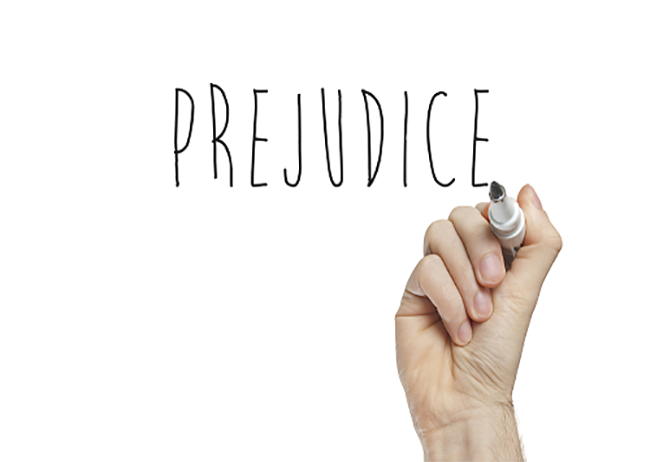Blog

PREJUDICE IN UM CASES
/ 14.Jul, 2010
In Vanderhoff v. Harleysville Insurance Company, No. 123 MAP 2006 (July 6, 2010), the Supreme Court of Pennsylvania addressed the issue of the need for an insurer to establish prejudice in the phantom vehicle situation where late notice of the phantom vehicle accident was provided to the UM insurer. In framing the issue, the Supreme Court stated:
In this case, we consider the effect of the inclusion of a provision in the Motor Vehicle Financial Responsibility Law’s (MVFRL), 75 Pa.C.S.A. ‘ 1701-1799.7, definition of “uninsured motor vehicle,” providing for notification of police and the insurer within thirty days of an accident caused by an unidentified vehicle. Specifically, we examine the continued applicability of the longstanding precedent of this Court conditioning an insurer’s denial of benefits, due to the insured’s failure to provide notice, upon the insurance company’s ability to demonstrate prejudice. See Brakeman v. Potomac Insurance Co., 371 A.2d 193 (Pa. 1997).
Slip Opinion at 1. In resolving this dispute, the Supreme Court found that the prejudice requirement in Brakeman is to be applied to the phantom vehicle situation. The definitional requirement of notice found in ‘ 1702 of the Financial Responsibility Law with respect to the establishment of prima facie uninsured motorist case did not abrogate the longstanding prejudice requirement as established in Brakeman. In so doing, the Supreme Court remanded the matter to the Court of Common Pleas for a hearing on the issue of prejudice.
The Financial Responsibility Law definition of uninsured motor vehicle requires notice to the police or proper governmental authority, as well as the insurer, in order to establish a prima facie uninsured motorist claim. Specifically, the Financial Responsibility Law defines uninsured motor vehicle as:
(3) An unidentified motor vehicle that causes an accident resulting in injury provided the accident is reported to the police or proper governmental authority and the claimant notifies his insurer within thirty days, or as soon as practicable thereafter, that the claimant or his legal representative has a legal action arising out of the accident.
75 Pa.C.S.A. ‘ 1702. A question arose, therefore, as to whether the definitional prerequisite for the establishment of an uninsured motorist case abrogated the application of the prejudice requirement of Brakeman in late notice situations. The Superior Court had found that no such prejudice requirement existed in the phantom vehicle accident situation. The Supreme Court reversed that finding. However, the Supreme Court did not reverse the finding of the Superior Court which reversed the ruling of Judge Conahan of the Court of Common Pleas of Luzerne County. Specifically, Judge Conahan had found that the plaintiff had given notice of the phantom vehicle accident to the Harleysville Mutual Insurance Company. The Superior Court found that the record did not support any such finding. In retaining this portion of the Superior Court decision, and remanding the case for a hearing on this issue, the Supreme Court stated:
The Trial Court did not have the opportunity to answer this question because it concluded that the plaintiff had supplied sufficient notice to the insurance company. The Superior Court reversed that finding, concluding that the record did not support the Trial Court’s finding.
Slip Opinion at 11, n. 3. Thus, while the Superior Court reaffirmed the obligation to establish prejudice in order to avoid the obligation of payment in late notice cases, the Supreme Court specifically found that the plaintiff had not given timely to the insurer of the phantom vehicle accident in this case. The only issue, therefore, is that of prejudice.
Under the facts of the Vanderhoff case, prejudice appears apparent. In fact, the summarizing the facts of this case, the Supreme Court noted:
On October 4, 2001, a motor vehicle collision occurred between a truck driven by appellant, Forester Vanderhoff, and a car driven by Mr. Ryan Piontkowski on the Sans Souci Parkway in Hanover Township, Luzerne County. Appellant was operating the truck in the course of his employment with Respiratory and Convalescent Specialties, under a motor vehicle insurance policy with Harleysville Insurance Co. Prior to the collision, both vehicles were preparing to turn left at a busy intersection controlled by a stop light, with Mr. Piontkowski’s car in front of the appellant’s truck. Appellant avers that when the green turning arrow appeared, he began proceeding forward, but took his eyes off of the road for a second. When he looked back to the road, he discovered that Mr. Piontkowski’s car had stopped in front of him. Although he applied his brakes, appellant nonetheless struck Mr. Piontkowski’s car.
A critical factual dispute in this case involved whether Mr. Piontkowski stopped to avoid an unidentified car. If the unidentified car existed and caused the accident, the so called “phantom vehicle” could constitute an uninsured motor vehicle, under the definition provided in ‘ 1702 of the MVFRL, which could trigger appellant’s recovery of uninsured motorist benefits under the Harleysville Insurance policy covering his employer’s vehicle. The existence of the phantom vehicle, however, was disputed because, while appellant testified to its existence, Mr. Piontkowski denied it. Moreover, appellant did not mention the phantom vehicle in the account he provided to the hospital after the accident, nor when filing his workers’ compensation claim with Harleysville, which was also his employer’s workers’ compensation carrier. Additionally, the original Police Report did not reference a phantom vehicle. Instead, appellant asserts that when he received the Police Report several months after the accident he noticed the omission of a phantom vehicle and, in September, 2002, requested that the Hanover Police Department correct the report. The request was denied.
Slip Opinion at 2-3. It is within this factual context, that the uninsured motorist carrier, the Harleysville Mutual Insurance Company, must establish prejudice. Such prejudice can be established by pointing out the lost opportunity of the insurer to investigate the claim, canvas the area for witnesses, photograph and inspect the accident scene, and retain an accident reconstruction expert to provide testimony regarding the manner in which the accident actually occurred. The existence of this prejudice will be determined by the Trial Court on remand.
Therefore, the decision sets the stage for the entry of a verdict in favor of the UM carrier. An article describing this decision can be found at http://citizensvoice.com/news/ruling-could-undo-conahan-award. In this case, the Harleysville Mutual Insurance Company was represented on appeal by James C. Haggerty, Esquire of Swartz Campbell LLC.


Comments